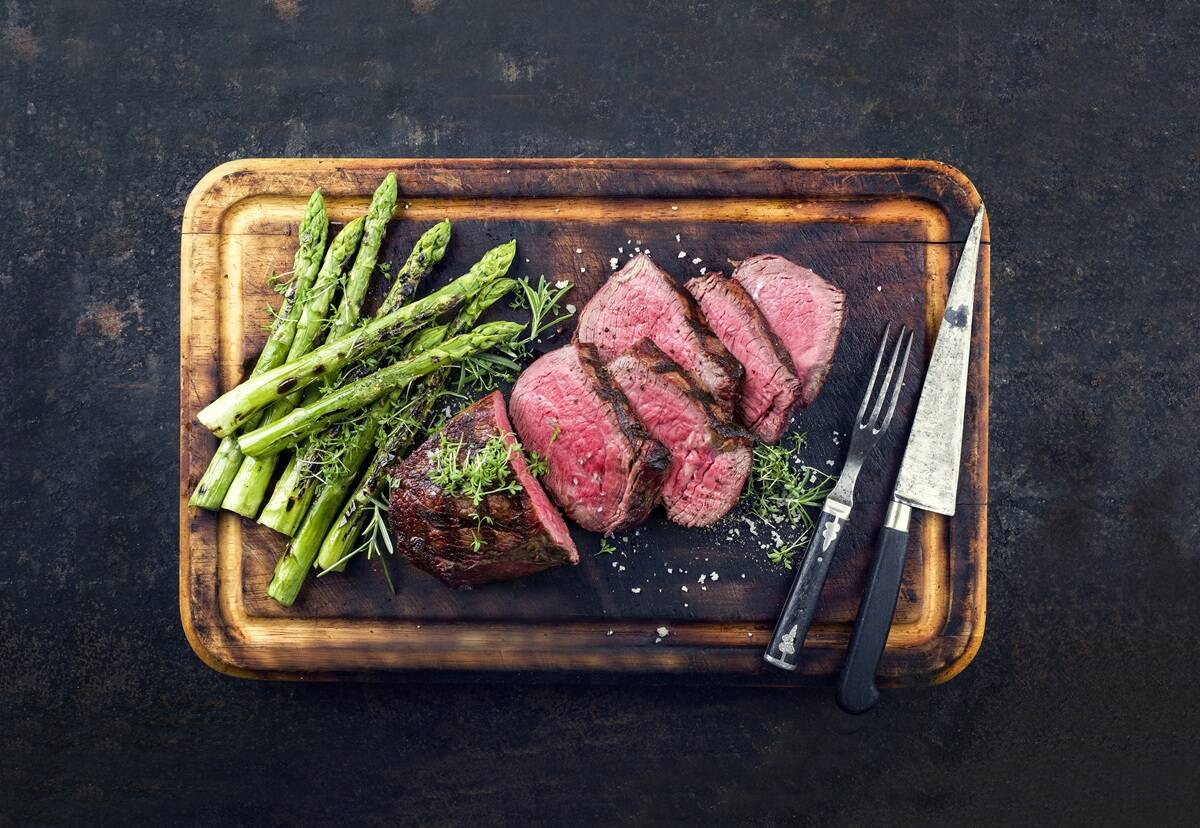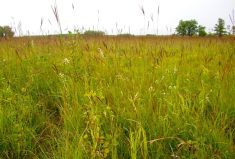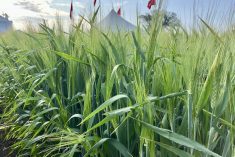After a hot, dry summer in the Cypress Hills, Rick Toney knew some budgeting was in order to ensure his cows would be properly fed this winter.
Toney, who ranches near Gull Lake, Sask., and serves as the chair of the Saskatchewan Cattlemen’s Association, runs around 500 cows in addition to a small backgrounding lot. Normally, his outfit puts up enough hay and silage each year to feed cattle through the winter and have enough left over for the spring.
“Due to the lack of rain, pastures are not as good as they normally are in the Gull Lake area. And our silage tonnage was down to maybe half of what it would normally be and hay production was down to half,” said Toney. “This year we will be completely out of hay,” he added, noting that he’s unsure how far the silage he does have will stretch.
Read Also

Building demand together: The impact of Canada’s beef import levy
The beef import levy has become a central tool for ensuring balance in Canada’s beef industry
Toney’s situation is not unique. Many beef producers across the Prairies have been searching the classifieds for hay and penciling out the cost of other feed options. In the summer, hay production in numerous parts of the Prairie was reported to be down, with eastern Manitoba in a particularly dire situation.
A large swath of Saskatchewan was approved for livestock tax deferrals, including the entire southern region, much of the central portion of the province and part of the north. Regions in B.C., Quebec and New Brunswick were also authorized for livestock tax deferrals.
“For Alberta, the feed shortages tend to start about Edmonton-south, and the farther south you get it gets progressively worse,” said Ted Nibourg, farm business management specialist at the Alberta Ag-Info Centre in Stettler. “North of Edmonton and up into the Peace Country, it sounds like the forage situation is pretty good up there, and it’s definitely moderated feed prices, hay prices in particular. But as you get farther south, the availability of the feed (decreases) and the cost of the feed goes up.”
Despite the availability of hay from other areas, the cost of transportation can be a hindrance.
“We’re hearing reports anywhere from $4 to $6 per loaded mile for hay, and that translates anywhere from $35 to $40 a bale, which really adds significantly to the cost,” Nibourg said.
For some producers, dry pastures have had a cumulative effect on their costs this year.
“A lot of guys had to pull their cows off pasture anywhere from a month to six weeks earlier than normal, and so what that has done is just increased the feeding period,” said Nibourg.
Purchasing enough hay to feed their herd until spring is the best choice for some; others will send their cows to custom feeders for the winter months. In more extreme situations, Nibourg stated, neither option will be quite enough to make it through.
“Sometimes the feed costs are so darn high… in some cases you’re going to be in a loss position, and we have got a number of producers just downsizing considerably. We’re hearing anywhere from 25 to 35 per cent cull rates this fall.”
Financial considerations come first when deciding which option is best for you.
“The primary factor they have to look at is all the costs involved and then do a partial budget to see which is the most economical for them,” said Nibourg.
For example, transportation costs are a factor in most options. Cost of freight will affect the price of bringing in hay from elsewhere, and it’s also a consideration if choosing to take cattle to a custom feeder, particularly given the distance from your operation to the destination.
The length of time cattle are custom fed can also affect more than the cost of feed. If cows will be fed during your calving season, there may be extra costs included.
“Typically, the cost of that is anywhere from $25 to $50 per live calf, and vet meds are going to be over and above that,” said Nibourg.
It may also be useful to take next spring’s pasture quality into consideration when creating your budget, given that this year’s conditions could force some producers to delay turning cows out to grass.
“This grass got hit pretty darn hard, and it begs the questions whether it went into the fall in good shape. And it may take another three, four weeks for it to come, so we may not be able to turn those cows out before the first of July,” he said. If this is the case, another month of feed may be required.
Another key aspect of budgeting is to include the projected price of next year’s calf crop.
“If they take a real tumble, we could still be in a loss situation,” said Nibourg. “On the other hand, if we experience a smaller calf crop due to the large cow cull, we might actually have a premium on those calves.
“You can pencil it out until the cows come home, but if it’s not going to pay in the end, it begs the question whether you want to stay into it,” he continued. “There’s got to be a return at the other end. Any feed going into those cows right now has to be charged against the calf crop next year.”
Still, cost isn’t the only factor to consider.
“It all boils down to the costs in the end, but you would never sacrifice animal welfare,” said Toney. “In that situation you would always be making sure that wherever you take your cattle, whether they’re at home or somewhere else, that they’re getting fed properly.”
If entering into a custom feeding arrangement, producers need to be careful to choose an operation that will take good care of their cattle. Nibourg advises drawing up a written agreement.
“You’re making the assumption that those cattle are going to be in reasonable shape coming back out,” he said. “A term care agreement for livestock is probably important so both parties agree on the conditions the cows go in and what condition they come out on.”
Find out as much as possible about the management practices of the custom feeding operations that you are considering. Asking about feeding programs and feed testing is crucial, as well as looking into herd health and biosecurity, proper facilities and vitamin and mineral programs.
“You’ve got to do a little bit of a background check,” said Toney, who suggested speaking with common acquaintances as well. “When you’re taking cattle to somewhere else to be pastured or to be fed for the winter, you want to make sure the person is going to take very good care of your cattle.”
For Toney, a mixture of buying feed and having some of his cows custom fed made the most financial sense for his operation. He first found a field of lentils that a producer hadn’t harvested and was available for him to purchase and bale.
“We’re going to use it for tub grinding and feeding with the silage to extend the silage,” he explained.
Purchasing enough feed at a cost-efficient rate, however, wasn’t going to be an option.
“We bought some feed that we got at a reasonable price and then prices kind of skyrocketed and we weren’t finding enough feed at the price that made it economical.”
With that, the idea of custom feeding came into play, and Toney began looking into options in eastern Saskatchewan, as they pasture cattle there. He also checked with friends in the Prince Albert and North Battleford areas regarding feed availability, custom feeders and costs.
Wintering part of his herd with Duane Thompson, a producer at Ituna in eastern Sask., emerged as an option. Toney compared this to the cost of buying more hay and keeping all his cows at home. Given the cost of transportation for hauling both cattle and hay, he decided that custom feeding was the way to go.
“The feed that we’ve grown at home, we’ll have cattle at home to utilize that. And then we just left cattle over there to make up the difference.”
His cows will be custom fed until the beginning of March, when he’ll bring them home for calving. That will get Toney through the feed gap. He also does a lot of winter grazing, so reducing the cows he keeps at home will make up for the shortage in winter grazing and feed.
There are several resources producers can use when deciding how to get their herd through a winter feed shortage. Provincial extension specialists can help create budgets and weigh options.

















